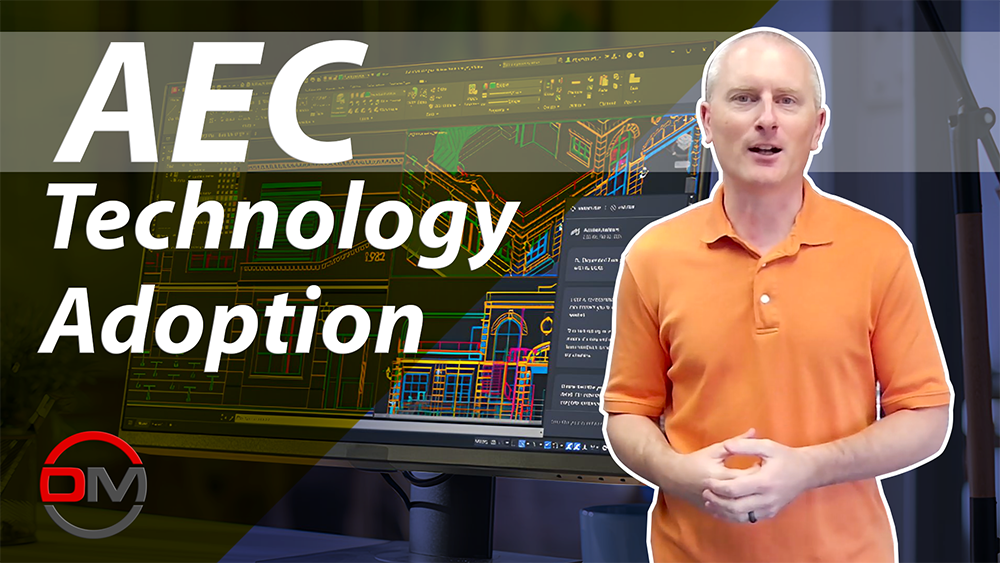One topic that often arises in discussions around the AEC (Architecture, Engineering, and Construction) industry is the relationship between new technology and the actual work. A common criticism of the AEC field is that it is slow to adopt new technology and is not forward-thinking or embracing the latest innovations. We challenge this assumption and defend the many professionals in the industry who are actively trying to use new technologies, despite the hurdles.
The History of Technology Adoption in the AEC Industry
The AEC industry has a long history of embracing new technology in construction. It may sometimes appear slow to adopt certain innovations, but there are logical reasons for this, and understanding the past can shed light on the present.
With the advent of personal computers, architects and engineers were among the first to use them since CAD (Computer-Aided Design) was one of the earliest and most obvious applications. Engineers and architects learned how to move from hand-drawn drafts to computer-generated layouts. AutoCAD and other CAD packages pushed the limits of computer hardware, and professionals tried to use these tools as effectively as possible within the limits of the technology at the time.
Similarly, as spreadsheets arrived, engineers quickly began using them for calculations, transforming how they handled the repetitive, labor-intensive tasks that had previously been done by hand. Though spreadsheet technology has not changed dramatically over the years, engineers continue to push its boundaries.
As software continued to evolve, architects and engineers kept up with new capabilities, applying them to their work. Already leveraging computers for CAD work, professionals were ready to incorporate other emerging computer tools like email, PDFs, 3D collaboration through BIM (Building Information Modeling) tools, and AEC cloud-based file sharing.
Why Does Adoption Sometimes Seem Slow?
Slowness in adopting new technology is not due to resistance, but because developing new technology is incredibly challenging. People do not adopt new tools just because they are new, they adopt them because they are better than the existing solutions. There are two primary sources of new technology in the AEC industry:
- In-House Customization: Many firms develop internal solutions to meet specific needs. Innovations like writing LISP scripts for AutoCAD or creating custom software require time and effort, and companies must balance these development efforts with the need to deliver billable work.
- Software Companies: The other source of new technology comes from AEC software companies like Autodesk, Bentley, and Graphisoft, which develop tools specifically to meet AEC industry trends. It is important to note that while these companies want rapid adoption of their solutions, the people using these technologies must ensure that the tools meet their day-to-day needs.
The Case of AI in the AEC Industry
The AEC industry is exploring ways to incorporate AI, but it is important to understand that technology needs to be implemented in genuinely useful ways. A lot of the attention AI in AEC is getting right now is focused on chat interfaces, but simply adding a chatbot to this space does not immediately solve any problems, and this technology is not yet reliable enough to handle complex tech support.
Another area where AI is being explored is generative design, where engineers try to automatically layout devices in a building. While this seems like it would be perfect for AI, the technology is not quite there yet. Despite several companies working toward a solution, none have succeeded in delivering something that works consistently across different projects.
Technology Adoption: Not a Matter of Resistance, But Readiness
The reality is that the AEC industry does not resist new technology. If anything, they are often on the cutting edge and pushing the limits of what is possible. The fact that some new resources are not being adopted quickly reflects that the technology is not as effective as it needs to be.
Developers should focus on creating tools that are truly useful for architects and engineers. Once these tools meet the practical needs of the profession and prove their value, the industry will adopt them—not because they are trendy or new, but because they improve how people work.
Join Our Free Webinar
April 16, 2025 • 1:00 ET / 10:00 PT
“Create Single-Line Diagrams in Revit Without Late Nights or Change Orders”

